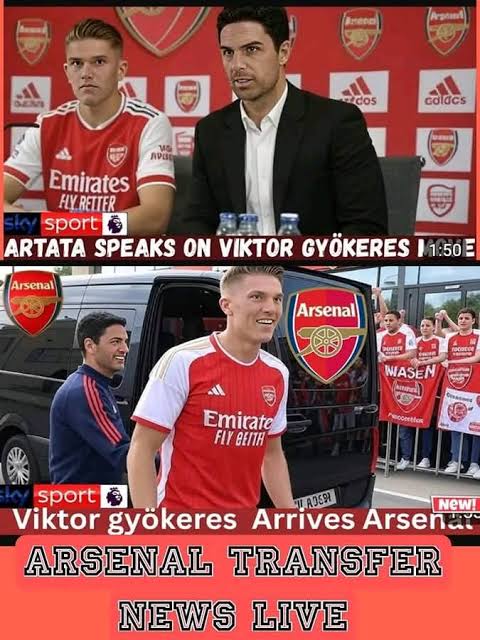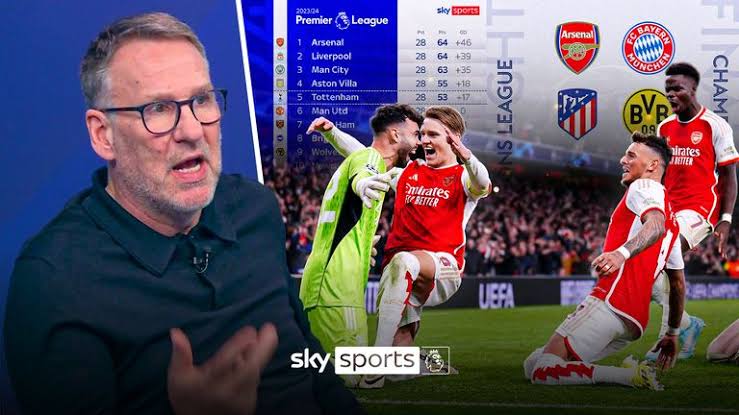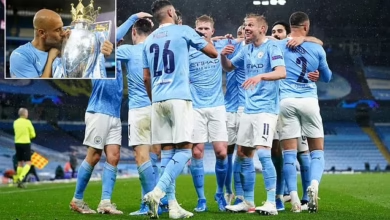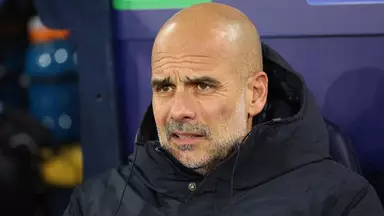Arsenal’s Striker Dilemma: Why Ollie Watkins Could Be the Perfect Alternative to Gyokeres and Sesko

The ,summer transfer window continues to dominate headlines at Arsenal, with the club’s pursuit of a new striker becoming increasingly complex as the weeks progress. With less than two weeks remaining before Mikel Arteta and his squad embark on their pre-season tour of Singapore and Hong Kong, the urgency to secure a proven goalscorer has reached fever pitch among the Arsenal faithful.
The transfer saga surrounding Arsenal’s striker search has been characterized by its unpredictable nature, with two names consistently emerging as the primary targets: Viktor Gyokeres of Sporting CP and Benjamin Sesko from RB Leipzig. The narrative has shifted dramatically from week to week, with media reports suggesting Arsenal are alternately close to securing either player, creating a sense of uncertainty that has left supporters questioning which direction the club will ultimately pursue.
Viktor Gyokeres has emerged as one of Europe’s most prolific strikers following his remarkable transformation in Portugal. The Swedish international’s goal-scoring exploits with Sporting CP have caught the attention of numerous elite clubs across Europe, with his physical presence, clinical finishing, and ability to operate effectively in various attacking systems making him an attractive proposition for Arsenal’s tactical setup under Arteta.
Benjamin Sesko, meanwhile, represents a different profile entirely. The Slovenian forward has impressed with his performances for RB Leipzig, showcasing the kind of versatility and technical ability that aligns perfectly with Arsenal’s preferred style of play. His youth, potential for development, and proven track record in the Bundesliga have made him an equally compelling target for the North London club.
However, both players come with significant financial implications that extend far beyond their transfer fees. The total package for either striker would likely exceed £60 million, representing a substantial investment that would impact Arsenal’s transfer budget for years to come. This financial commitment becomes even more significant when considering the additional costs associated with agent fees, wages, and the long-term contractual obligations that would accompany such high-profile signings.
Amid the ongoing speculation surrounding Gyokeres and Sesko, a compelling alternative has emerged in the form of Ollie Watkins. The Aston Villa striker, who has consistently been linked with a move away from Villa Park, represents a unique opportunity for Arsenal to address their striking needs while potentially saving millions in the process.
Watkins’ profile as a player offers several advantages that make him an intriguing proposition for Arsenal. His proven track record in the Premier League eliminates the adaptation period typically required for players transitioning from foreign leagues. Having scored consistently for Aston Villa over multiple seasons, Watkins has demonstrated his ability to perform at the highest level of English football, adapting his game to face the league’s most formidable defenses week after week.
The England international’s versatility represents another significant asset. Throughout his career, Watkins has proven capable of operating effectively across the forward line, functioning as a central striker, wide forward, or even dropping deeper to link play. This flexibility would provide Arteta with numerous tactical options, allowing the Spanish manager to deploy Watkins in various systems depending on the opposition and game situation.
Arsenal’s interest in Watkins is not a new development. The club made a concrete move for the striker during the January transfer window, submitting a £40 million bid that was promptly rejected by Aston Villa. This initial approach demonstrated Arsenal’s genuine appreciation for Watkins’ abilities and their recognition of his potential contribution to the team’s attacking arsenal.
However, the rejection of Arsenal’s bid revealed a significant gap in valuation between the two clubs. Aston Villa’s insistence on a fee in the region of £60 million for their star striker reflected their understanding of his importance to their tactical system and their reluctance to part with such a crucial player mid-season. From Villa’s perspective, Watkins represented not just a goalscoring threat, but a focal point around which their entire attacking structure was built.
Arsenal’s decision not to pursue the transfer further at that valuation suggests a calculated approach to their transfer strategy. The club’s assessment that £60 million did not represent good value for money for a player approaching his 30th birthday indicates a pragmatic evaluation of both immediate impact and long-term investment potential. This financial discipline, while potentially frustrating for supporters eager to see new signings, reflects the broader strategic approach that has characterized Arsenal’s recent transfer activity
The current situation at Aston Villa presents a complex backdrop that could potentially work in Arsenal’s favor. The club’s ongoing issues with UEFA’s Squad Cost Rules have created a financial imperative to reduce their wage bill, both in the current summer window and the subsequent transfer period. This regulatory pressure has forced Villa to consider difficult decisions regarding their squad composition and player retention.
The Squad Cost Rules, designed to ensure financial sustainability across European competitions, have placed Villa in a position where they must actively seek to reduce their overall expenditure on player salaries. While there are various methods to achieve this objective without selling their most valuable assets, the arrival of a substantial offer for a player like Watkins could provide the perfect solution to their financial constraints.
This situation creates a potentially advantageous negotiating position for Arsenal. Villa’s need to balance their books could make them more receptive to offers that might have been immediately dismissed under normal circumstances. The club’s financial pressures, combined with their desire to remain competitive in both domestic and European competitions, could create the conditions for a deal that benefits all parties involved.
Despite the potential advantages of pursuing Watkins, Arsenal’s continued reluctance to meet Villa’s asking price reflects a broader financial philosophy that has governed their recent transfer activity. The club’s assessment that £60 million represents poor value for a 29-year-old striker, particularly when considered as a short to medium-term solution, demonstrates the kind of strategic thinking that has characterized their approach under Arteta and sporting director Edu.
This financial caution is not without merit. At 29, Watkins would provide immediate impact but limited resale value, making the investment a significant commitment without the potential for future financial return. Compared to younger alternatives like Sesko, who could theoretically appreciate in value over time, Watkins represents a different type of investment proposition that prioritizes immediate contribution over long-term asset appreciation.
The comparison with the valuations of Gyokeres and Sesko further complicates Arsenal’s decision-making process. While both players would command higher transfer fees, their age profiles and potential for development offer different value propositions. Gyokeres, despite being slightly older than Sesko, has proven his ability to score goals consistently at the highest level, while Sesko’s youth and potential make him an attractive long-term investment.
From a purely tactical perspective, Watkins’ attributes align remarkably well with Arsenal’s preferred style of play under Arteta. His ability to press from the front, create space for teammates, and contribute to the team’s overall defensive structure would complement the high-intensity approach that has become synonymous with Arsenal’s recent success.
Watkins’ experience in the Premier League would provide immediate tactical familiarity, eliminating the adaptation period that often accompanies international transfers. His understanding of the league’s physicality, pace, and tactical nuances would allow him to contribute immediately, potentially providing the kind of instant impact that Arsenal require as they continue their pursuit of major honors.
The striker’s ability to operate effectively in various attacking configurations would also provide Arteta with increased tactical flexibility. Whether deployed as a central striker in a traditional 4-3-3 formation, or utilized in a more fluid front three alongside players like Bukayo Saka and Gabriel Martinelli, Watkins’ versatility would enhance Arsenal’s tactical options and provide solutions to different types of defensive challenges.
Perhaps one of the most compelling aspects of a potential Watkins transfer is the player’s previously stated allegiance to Arsenal. His admission of being an Arsenal fan adds an emotional dimension to any potential deal that extends beyond mere financial considerations. This connection to the club could provide additional motivation and commitment that might not be present in purely mercenary transfers.
The psychological impact of signing a player who genuinely wants to represent the club should not be underestimated. Throughout football history, some of the most successful transfers have involved players who harbored childhood dreams of representing particular clubs. This emotional investment often translates into enhanced performance levels and a deeper commitment to the club’s objectives.
For Arsenal, securing a player who brings both technical ability and emotional investment could prove particularly valuable as they continue their pursuit of major honors. The combination of Watkins’ proven ability and his genuine desire to succeed at Arsenal could create the kind of positive dynamic that enhances team chemistry and collective performance.
The reported interest from Manchester United adds another layer of complexity to Arsenal’s pursuit of Watkins. The involvement of a direct competitor for Champions League qualification creates additional urgency and could potentially drive up the striker’s valuation. United’s financial resources and their own need for attacking reinforcement make them a formidable competitor in any transfer negotiation.
This competitive dynamic could work both for and against Arsenal’s interests. On one hand, the presence of another interested party could encourage Villa to maintain their asking price, knowing that multiple clubs are willing to engage in negotiations. Conversely, the competition could create urgency that forces Arsenal to make a more decisive move, potentially leading to a quicker resolution of the transfer saga.
The rivalry between Arsenal and United also adds a sporting dimension to the competition for Watkins’ signature. Both clubs are seeking to establish themselves as consistent Champions League contenders, and the acquisition of a proven Premier League striker could provide a significant advantage in that pursuit.
Arsenal’s approach to the striker market reflects a broader transfer philosophy that seeks to balance immediate competitive needs with long-term strategic objectives. The club’s hesitation to overpay for players approaching their 30th birthday demonstrates a commitment to building a sustainable squad structure that can compete at the highest level for years to come.
This strategic approach has already yielded significant benefits in other areas of the squad. The signings of players like Declan Rice, Kai Havertz, and Jurrien Timber have all demonstrated Arsenal’s ability to identify and acquire players who provide both immediate impact and long-term value. The challenge now lies in applying this same philosophy to the striker position, where the market conditions and available options present unique challenges.
The club’s willingness to invest heavily in the right player, as demonstrated by their pursuit of both Gyokeres and Sesko, suggests that they are not opposed to significant financial commitments. However, their insistence on securing value for money indicates a disciplined approach that prioritizes strategic fit over emotional or reactive decision-making.
With Arsenal’s pre-season tour of Singapore and Hong Kong rapidly approaching, the timing of any potential striker signing becomes increasingly crucial. The integration of a new forward into Arteta’s tactical system requires time and repetition, making early completion of any transfer highly desirable from a coaching perspective.
Pre-season tours provide valuable opportunities for new signings to adapt to their teammates’ playing styles, understand tactical instructions, and develop the chemistry necessary for effective on-field collaboration. A striker arriving late in the transfer window would miss these crucial development opportunities, potentially delaying their full integration into the team’s attacking structure.
This timing pressure could influence Arsenal’s decision-making process regarding Watkins. If the club determines that protracted negotiations for Gyokeres or Sesko might extend beyond the pre-season period, the immediate availability of Watkins could become a decisive factor in their transfer strategy.
Arsenal supporters’ expectations for the upcoming season have been shaped by the club’s recent progress and their near-misses in major competitions. The acquisition of a proven striker represents not just a tactical necessity but a statement of intent that could significantly impact supporter confidence and season ticket renewals.
The choice between Watkins and the more high-profile alternatives of Gyokeres and Sesko reflects different approaches to meeting these expectations. While Watkins offers proven Premier League quality and immediate impact, the alternatives provide greater excitement and potential for future development. This tension between pragmatism and ambition is characteristic of modern football’s transfer market complexities.
Fan opinion regarding potential signings often influences club decision-making, particularly at a club like Arsenal where supporter engagement and commercial considerations are closely intertwined. The club’s ability to present any signing as a positive step forward, regardless of whether it represents their first choice, will be crucial in maintaining supporter enthusiasm throughout the season.
Arsenal’s continued pursuit of striker reinforcements reflects both the importance of the position and the complexity of the modern transfer market. While Ollie Watkins represents a logical and potentially cost-effective solution to their attacking needs, the club’s reluctance to meet Aston Villa’s asking price demonstrates a commitment to financial discipline that has characterized their recent transfer activity.
The ultimate decision regarding Arsenal’s striker target will likely depend on a combination of factors including player availability, financial considerations, tactical fit, and long-term strategic objectives. While Watkins offers immediate Premier League experience and proven quality, the alternatives of Gyokeres and Sesko provide different value propositions that may ultimately prove more attractive to Arsenal’s decision-makers.
Regardless of which direction Arsenal ultimately pursue, the importance of securing a quality striker before the season begins cannot be overstated. The club’s ambitions for the upcoming campaign depend heavily on their ability to convert the chances created by their impressive midfield and wing play into goals. Whether that responsibility falls to Watkins, Gyokeres, Sesko, or another alternative entirely, the decision will likely prove pivotal in determining Arsenal’s success in the season ahead.
The coming weeks will provide clarity on Arsenal’s transfer strategy and their ultimate priorities in the striker market. For now, supporters can only wait and hope that the club’s careful planning and strategic approach will yield the attacking reinforcement necessary to finally deliver the major honors that have eluded them for so long.














